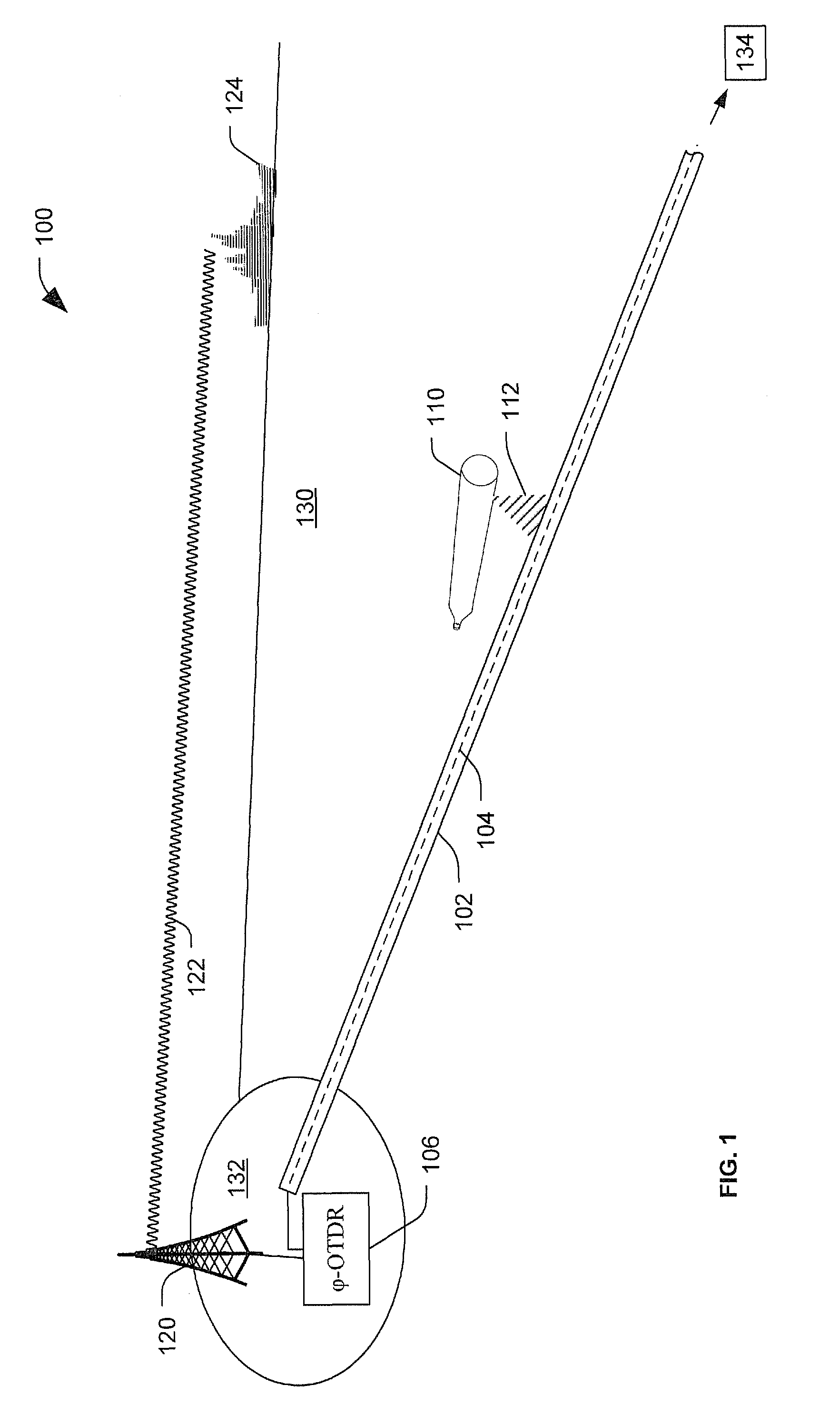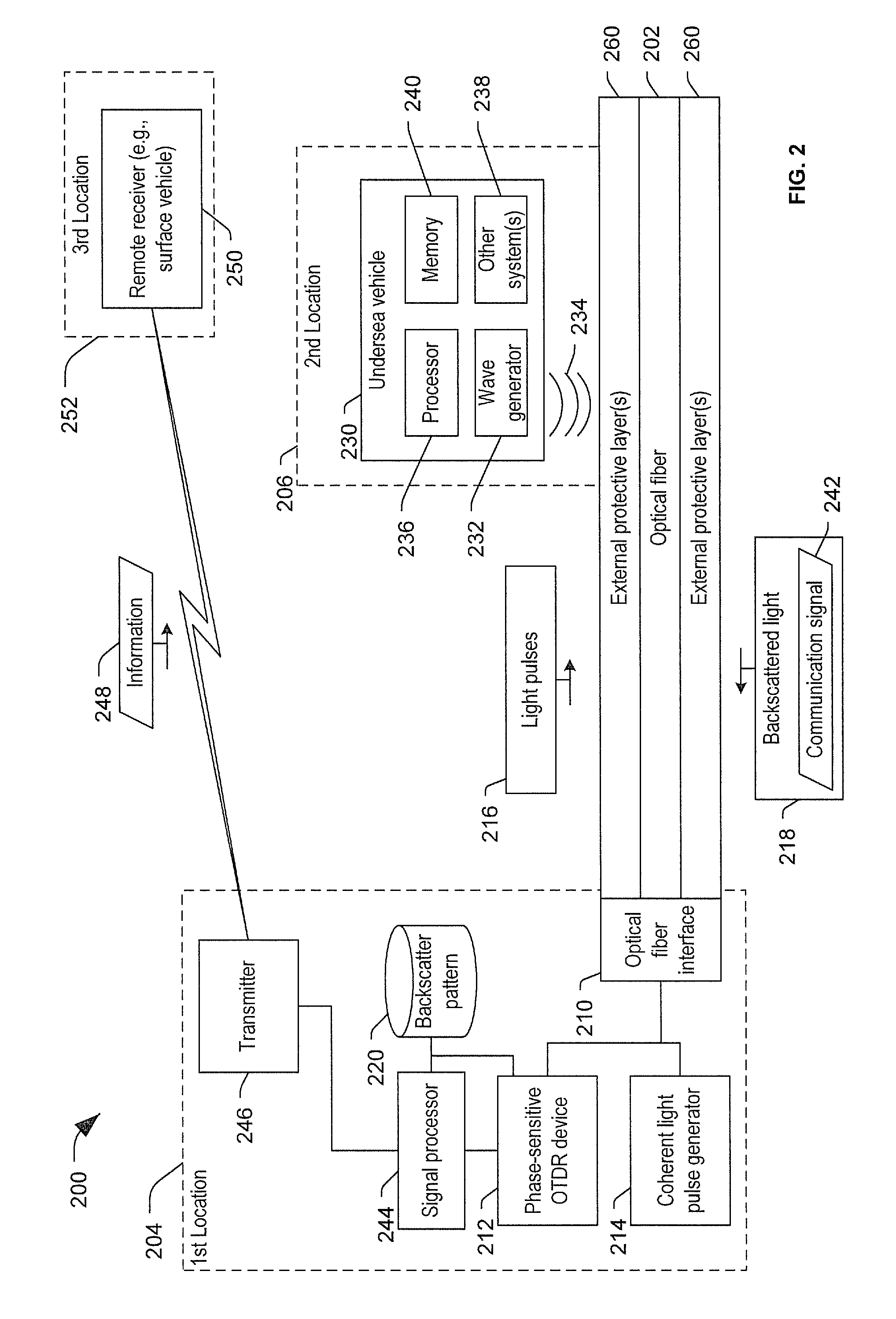Communication using modulated waves applied to an optical fiber
a technology of modulated waves and optical fibers, applied in the field of communication using modulated waves applied to optical fibers, can solve the problems of large power consumption, relatively short operational range of communication systems relying on such signals, and inability to meet the needs of underwater vehicles, etc., and achieve high data rate, high data rate, and long-distance wireless communication.
- Summary
- Abstract
- Description
- Claims
- Application Information
AI Technical Summary
Benefits of technology
Problems solved by technology
Method used
Image
Examples
Embodiment Construction
[0016]According to an illustrative embodiment, communication systems and methods that are capable of high-bandwidth, long-range communications are disclosed. The communication systems may utilize modulated waves (e.g., mechanical waves) to transfer a detectable signal to an optical fiber, enabling high-bandwidth, long distance wireless communication between an underwater vehicle and multiple locations.
[0017]FIG. 1 illustrates a wireless communication system 100. The wireless communication system 100 includes an optical fiber 102 that is adapted to carry light pulses 104. A phase-sensitive optical time domain reflectometry (OTDR) device 106 may be coupled to the optical fiber 102. The phase-sensitive OTDR device 106 may be adapted to receive reflections of the light pulses 104. The wireless communication system 100 also includes an underwater vehicle 110. The underwater vehicle 110 may be adapted to apply mechanical waves 112 to the optical fiber 102. The mechanical waves 112 may cau...
PUM
 Login to View More
Login to View More Abstract
Description
Claims
Application Information
 Login to View More
Login to View More - R&D
- Intellectual Property
- Life Sciences
- Materials
- Tech Scout
- Unparalleled Data Quality
- Higher Quality Content
- 60% Fewer Hallucinations
Browse by: Latest US Patents, China's latest patents, Technical Efficacy Thesaurus, Application Domain, Technology Topic, Popular Technical Reports.
© 2025 PatSnap. All rights reserved.Legal|Privacy policy|Modern Slavery Act Transparency Statement|Sitemap|About US| Contact US: help@patsnap.com



